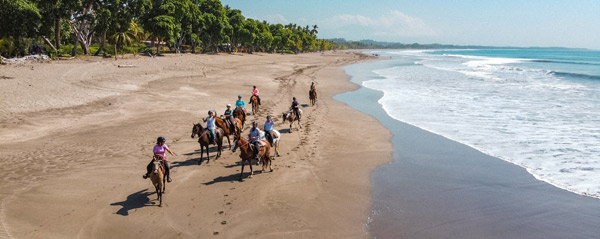Costa Rica and Panama are two Central American countries that are known for their stunning natural beauty and rich biodiversity. However, both countries also face a number of environmental challenges.
Costa Rica
Tourism
Costa Rica is a very popular tourist destination, known for its rainforests, volcanoes, and beaches. However, tourism can also have a negative impact on the environment. For example, tourists can generate a lot of waste and pollution. They can also damage sensitive ecosystems, such as coral reefs and rainforests.
In recent years, Costa Rica has taken steps to promote sustainable tourism. For example, the government has created a number of eco-lodges and national parks. However, there is still room for improvement. For example, the government could do more to crack down on illegal tourism activities, such as poaching and wildlife trafficking.

Deforestation
Deforestation is another major environmental challenge facing Costa Rica. In the past, Costa Rica lost a significant amount of forest cover due to agriculture and logging. However, the country has made significant progress in reforestation in recent years.
In 1996, Costa Rica banned the logging of old-growth forests. The government has also implemented a number of other policies to promote reforestation, such as paying farmers to plant trees on their land. As a result, Costa Rica’s forest cover has increased from 25% in 1990 to 53% in 2020.
However, deforestation is still a problem in Costa Rica, particularly in areas where there is pressure for agricultural development. The government needs to continue to enforce its forest protection laws and invest in reforestation programs.
Water pollution
Water pollution is another environmental challenge facing Costa Rica. The country’s water resources are threatened by agricultural runoff, sewage, and industrial waste.
The government has taken steps to address water pollution, such as building wastewater treatment plants and requiring farmers to reduce their use of pesticides and herbicides. However, there is still more work to be done. For example, the government needs to do more to enforce its environmental regulations and invest in clean water infrastructure.
Panama
Economic development
Panama is a rapidly developing country. The government is investing in infrastructure and industry, which is leading to economic growth. However, economic development can also have a negative impact on the environment.
For example, the construction of new roads and buildings can lead to deforestation and habitat loss. Industrial pollution can also contaminate air and water resources.
The government of Panama needs to balance economic development with environmental protection. It can do this by implementing sustainable development practices, such as using renewable energy and protecting sensitive ecosystems.

Climate change
Climate change is another major environmental challenge facing Panama. The country is vulnerable to sea level rise, extreme weather events, and changes in agricultural productivity.
The government of Panama is taking steps to address climate change, such as developing a renewable energy plan and investing in coastal adaptation measures. However, the country needs to do more to reduce its greenhouse gas emissions and prepare for the impacts of climate change.
Water resources
Water resources are another environmental challenge facing Panama. The country’s water resources are under increasing stress due to population growth, urbanization, and climate change.
The government of Panama needs to take steps to conserve and manage its water resources more effectively. It can do this by investing in water infrastructure, such as dams and reservoirs. It can also implement policies to reduce water consumption and pollution.
What Governments currently work on
Here are some specific recommendations for Costa Rica and Panama to address their environmental challenges:
Costa Rica
- Promote sustainable tourism practices, such as eco-lodges and tours that avoid sensitive ecosystems.
- Enforce forest protection laws and invest in reforestation programs.
- Invest in clean water infrastructure and reduce water pollution.
Panama
- Balance economic development with environmental protection by implementing sustainable development practices.
- Reduce greenhouse gas emissions and prepare for the impacts of climate change.
- Conserve and manage water resources more effectively.
In addition to these specific recommendations, both Costa Rica and Panama can also benefit from working together to address their environmental challenges, which hopefully will happen more in the near future. For example, they can share best practices and develop joint programs to protect shared ecosystems, such as the Mesoamerican Biological Corridor.
By working together, Costa Rica and Panama can ensure that their natural resources are protected
Conclusion Environmental Challenges
Costa Rica and Panama are two Central American countries that are facing a number of environmental challenges. However, both countries have also made significant progress in addressing these challenges. For example, Costa Rica has made significant progress in reforestation, while Panama has made progress in developing a renewable energy plan.
Both countries need to continue to invest in environmental protection and sustainable development. By doing so, they can ensure that their natural resources are protected for future generations.



